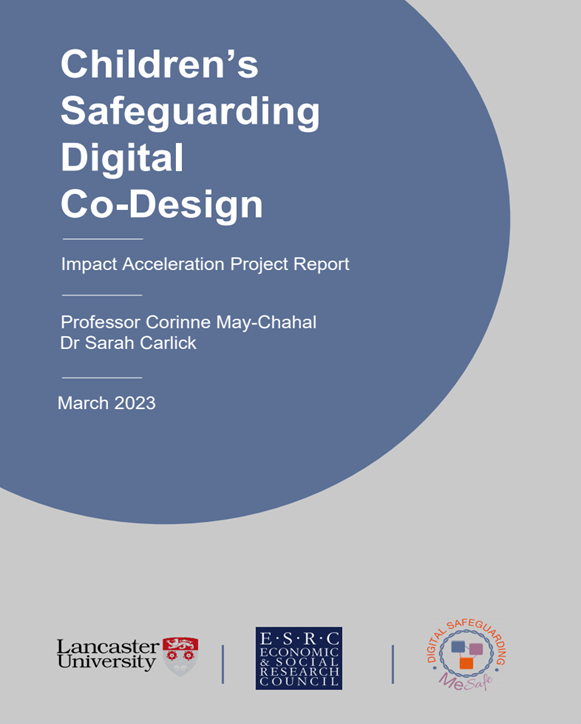The brave new world of digital safeguarding
Dr Sarah Carlick on how technology can – and should – revolutionise child protection
Children and young people today may be digital natives but digital safeguarding in social care is not a well-known concept. It has yet to be part of everyday social work practice.
Most people think digital safeguarding is just about staying safe online. But a true digital safeguarding approach aims to use technology for good, co-designed with children and young people. This includes the integration of artificial intelligence, chatbots, access to the latest devices and equipment, the use of applications for interventions, easy access to policies, and, perhaps most radically, delivering case management systems that offer children and families safe digital self-referrals.
I am a social worker by background currently involved in developing innovative ways for children and young people to digitally and safely self-refer and share their own information with social workers and other professionals.
Digital communities and digital safeguarding solutions can empower families within the context of family help. They can also allow children to feel heard in a non-stigmatised way throughout the child protection journey.
The revolution in digital communication is already transforming our lives. Online communication tools such as Zoom, Microsoft Teams and WhatsApp are widely used but they have limited use in a safeguarding context.
Dedicated interactive safeguarding apps in social care allow for self-reporting, immediate responses and access to information. They can also be age-appropriate or tailored to meet the needs of people with disabilities.
As it stands, the digital divide still presents considerable challenges for social workers as well as for children in realising the full potential of technology within safeguarding. Social care and public sector organisations lag behind in using technology for information sharing and communicating directly with children and young people digitally.
I work with local authorities implementing digital safeguarding strategies with the aim of introducing digital front doors for children. Describing a digital, online service as being at the heart of the community might sound contradictory. But in reality, it means there is a route to access services anywhere and at any time, opening up opportunities for frontline practice that empowers children and families.
It gives communities digital tools at a local level, increasing the speed of communication and placing written conversations directly into recording systems. As well as speeding up child protection referrals, reducing risk of harms quicker, it can break down stereotyping and fear associated with social workers and children’s social care, build trust in sharing of information in different formats, promote greater variety in ways of communicating, such as sharing videos and photos, and offer new information as sets of data for analysis.
Technology allows the creation ofmulti-agency digital front doors and an ability to digitally walk shoulder-to-shoulder with children in our local communities.
An example of a digital front door is where a child can refer themselves either for advice or for protection from harm through their own device such as a mobile phone or iPad. The response they get could initially be a chatbot to offer advice and guidance, or it could transfer direct to a team of digital advisors linked to a multi-agency safeguarding hub responding with questions and answers. It could involve completing an interactive form that can be forwarded to a social worker or provide a big red button to connect to the police or multi-agency support hub in an emergency without having to report to a trusted adult first.
Social workers and social care professionals may worry they lack the digital skills for this brave new world and that current case management systems are not able to adapt to ways children digitally communicate. There are challenges, including developing a digitally resilient workforce that works outside normal office with 24/7 digital referrals. There is also a need for a new generation of case management systems fit for the digital age. This requires leadership and strategy from a national perspective.
But overcoming such barriers ultimately benefits children because current service practices do not integrate with the way children live their lives which heavily interfaces with the digital world. If there is no digital offer to either access services or digitally contribute to their own records and care plans, then social care and practitioners are not speaking the child’s language.
A key aspect of this is children co-designing digital safeguarding systems. Doing so empowers them and ensures technology will be relevant to the child's lived experience. Co-design is about treating children as equal partners in user-centred design, especially for the implementation of digital self-referrals. If children are part of the original agreement and design this increases the safety elements of the platforms.
Technology can offer revolutionary ways of working with children and families in a digital world with the potential to complement - or even replace - the standard front door referral route of a phone call or email, which must be accompanied by an electronic form.
Digital self-referrals and digital engagement can be developed across the safeguarding spectrum from early help to child protection planning. At the core is improving the voice of the child throughout the system by delivering frictionless information sharing, self-referring and the improvement of case management systems.
British Asssociation of Social Work






